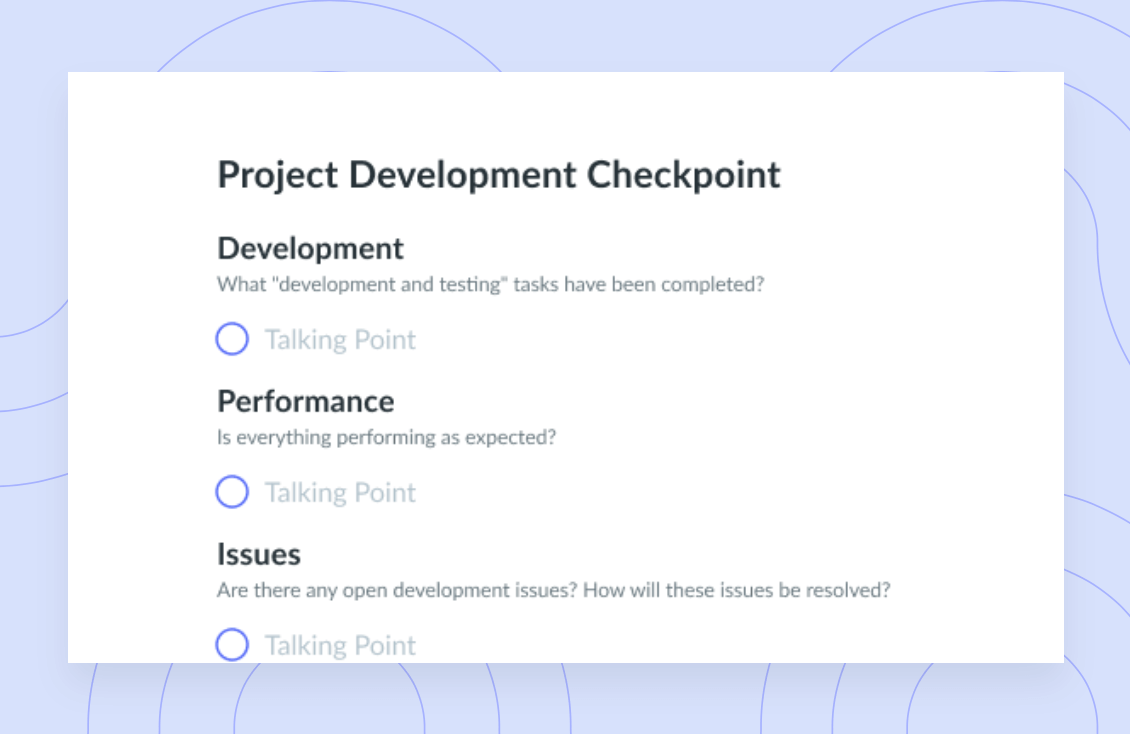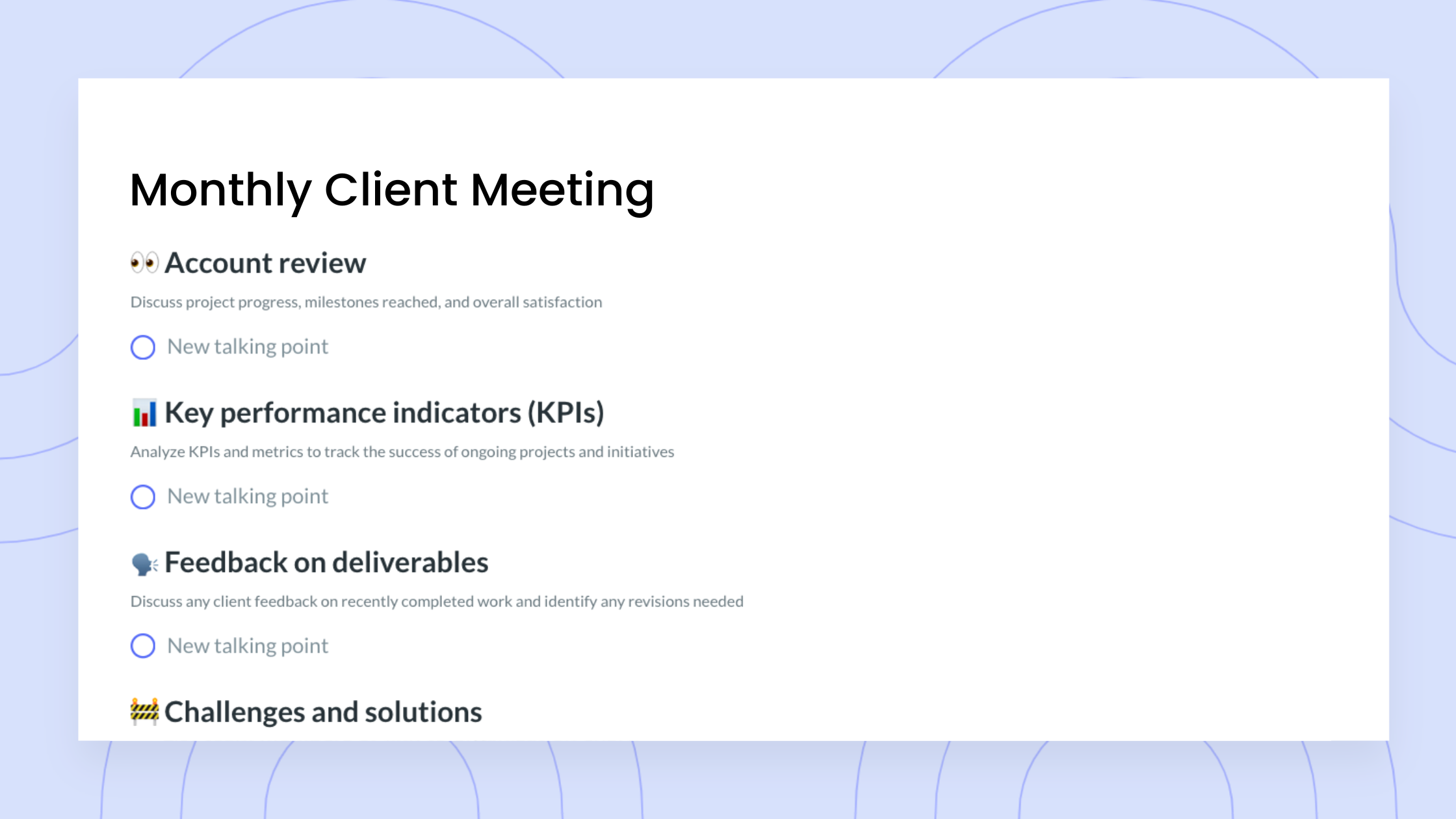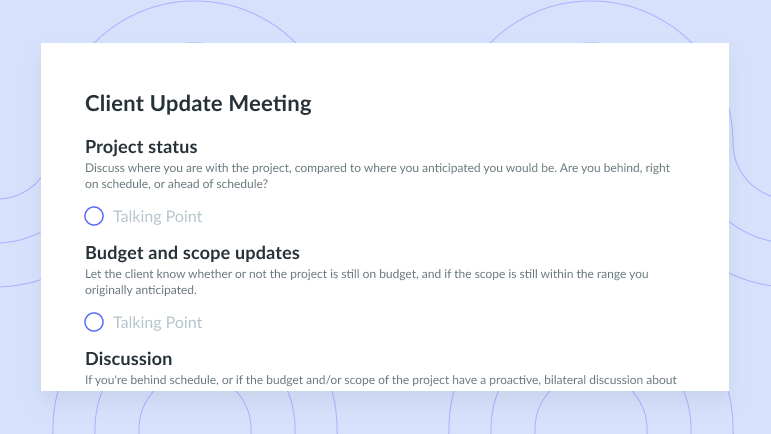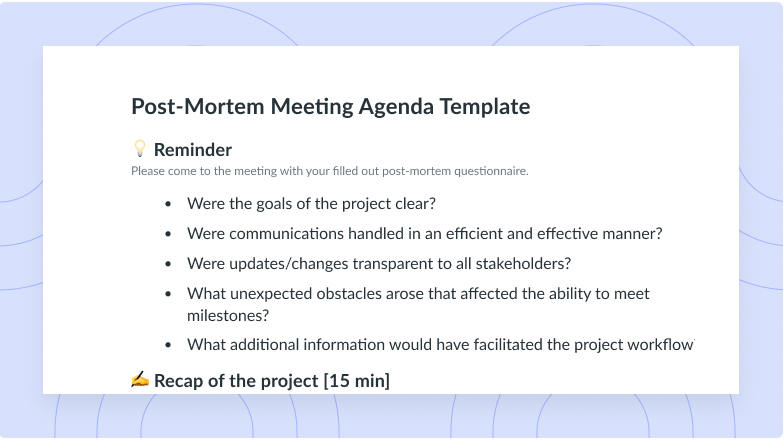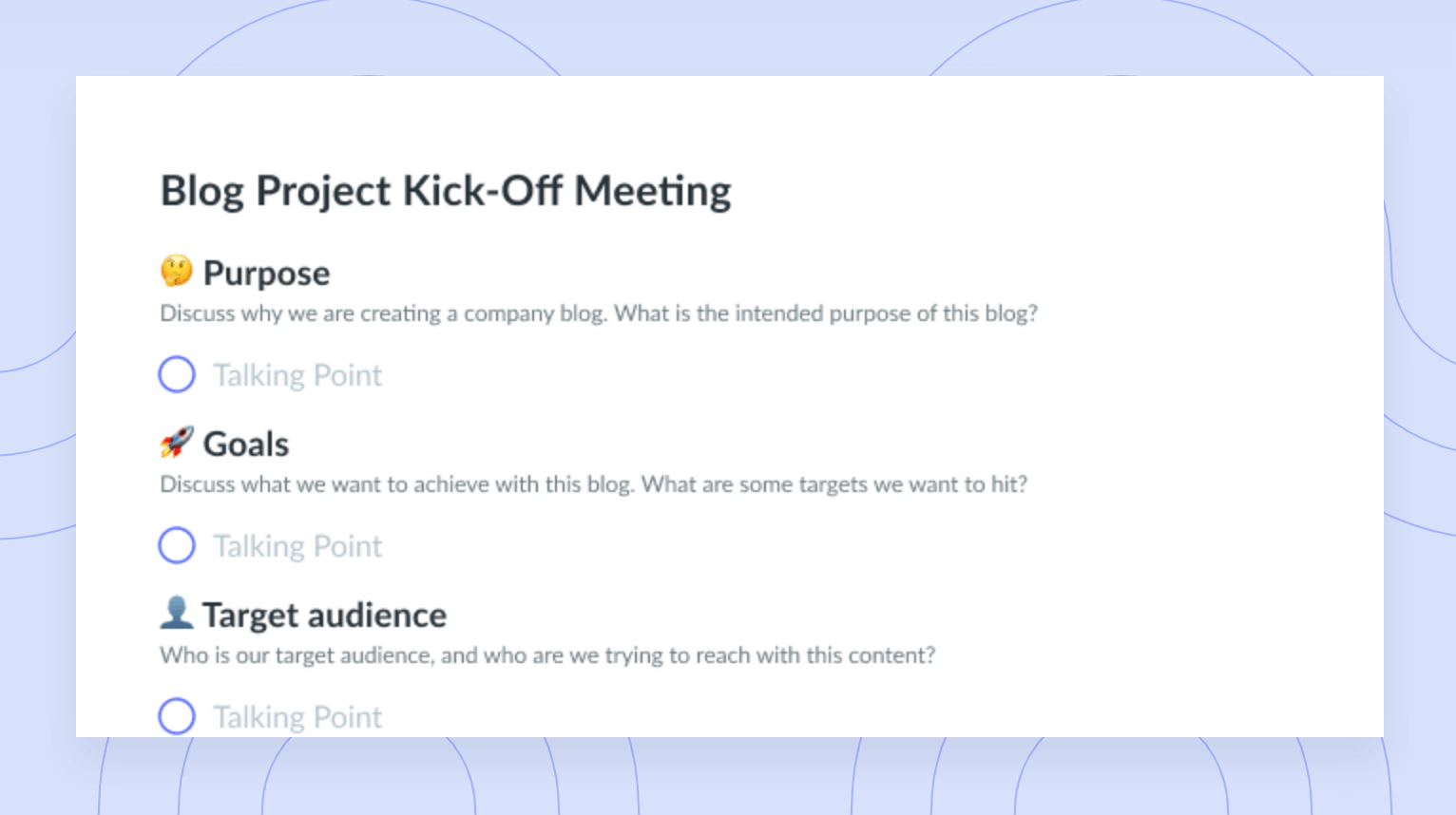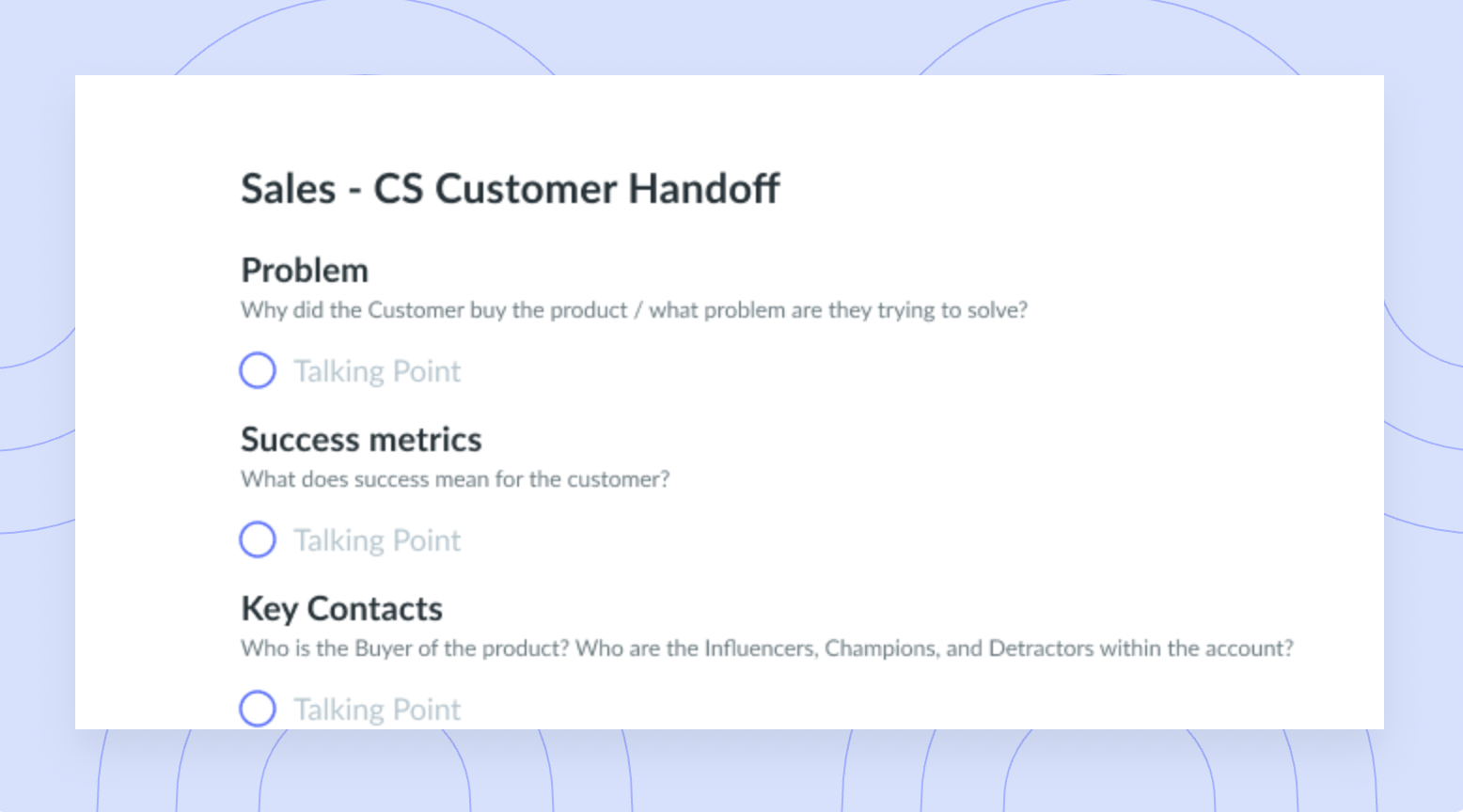Project Milestones: 6 Examples and Pro Tips
All about project milestones, why they are important and pro tips on building strong milestones before diving into a new project.
Regardless of how big or how small a project may be, you must plan ahead.
We’ve all tried to accomplish an exciting assignment by diving in headfirst, without any sort of idea where to start, what to expect along the way, or how long it’ll even take us to finish it.
While this may work for some people, it just isn’t the best way to go about things. Instead, before diving into a new project, take the time to iron out the milestones you expect along the way.
- What is a milestone in a project?
- Milestones vs. goals: What’s the difference?
- Why are project milestones important?
- How do you identify milestones in a project?
- Milestone examples
- Pro tips to build strong milestones
What is a milestone in a project?
Before we dive in, let’s first identify what a project milestone is. A milestone in a project is a specific point of progress as you move along the project timeline. They tend to be an important or significant step in the development of a project that needs to be hit in order to finish on time and hit the rest of the goals. Key milestones can also be used to divide a timeline into segments or stages to signify project progress.
The project team will typically define milestones during the planning phase of the project, which can help divide the project into more manageable sections. This can help the team feel less overwhelmed or stressed before rolling up their sleeves and getting started as they move through each project phase to achieve goals.
Milestones vs. goals: What’s the difference?
Now that you know what milestones are, you may be wondering how exactly they differ from project goals.
It’s simple. While a milestone is something the project team will decide upon ahead of time when creating a project timeline, a goal is something that you wish to happen or achieve as the project moves forward.
Let’s consider an example. A marketing team is working on a new content strategy for the upcoming quarter. This team may set a goal to have a 20% increase in organic traffic by the end of the quarter. The team could also have set milestones that consist of marking key decisions surrounding SEO keywords and articles on the website as they go live or get published.
Essentially, a milestone is a major event you’re planning ahead of time for, while a goal is something you’re hoping to happen as you move through the milestones. Milestones should always take place, while there’s no guarantee a goal will be achieved.
Why are project milestones important?
So, why set a project milestone in the first place?
Creating milestones is crucial to signifying forward progress as the team moves through the overarching project plan. This allows everyone involved to monitor the progress of the project to better understand if things are moving as planned.
Having project management milestones can also be useful when building a solid project plan and structure from the ground up. This will allow for a clear project schedule that irons out all of the major events to expect along the way.
Identifying important events throughout a project will also help to spot potential bottlenecks, as a milestone can be used to monitor deadlines. If those deadlines aren’t being hit, the project manager can take the time to identify why and what blockers the team may be experiencing that are holding up the process.
While being motivational to everyone and helping to align the team, project milestones are also important to hold everyone accountable for their part in the project. After all, no one wants to be the sole reason a milestone wasn’t able to be hit on time.
Finally, they can also identify when a project will be completed. Having this date in mind and ensuring that project stakeholders are aware of this date, can also help when moving through to project completion.
How do you identify milestones in a project?
Before a project is officially underway, you’ll want to take the time to identify the milestones and record them in project management software, like Fellow.
Because a milestone is used to track and measure progress by breaking a project into steps or phases, it will mark when one phase ends and another begins. As you identify what should be a milestone, remember to have a little fun. Once a milestone is achieved, plan for a mini celebration to mark checking it off and moving forward.
A common milestone within a project can be:
- Checking the project is staying within the set budget
- Start and end dates for the project
- Test or inspections to ensure all elements are operating and running smoothly
Remember that only events that are directly correlated to the project should be considered a key milestone.
Milestone examples
No matter how big or small the project is, here are some examples of milestones that you can set as a way to keep the entire team on track.
1 Reviewing project requirements
Before the project is approved or greenlighted, a milestone that your team should consider is reviewing the project requirements. For example, consider things like:
- How many people should be included on the project team?
- How much of the company budget should be allocated to the project?
- How long do we think it’ll take?
- What are the main resources we’ll need from start to finish?
Once all of these details are ironed out, the team will have a better idea of what to expect along the way.
2 Receiving feedback from key stakeholders
Another common project milestone is making sure that key project stakeholders are given the time to present their feedback. Whether it’s a client, customer, or c-suite executive, it’s important that their feedback is taken into consideration.
No matter if the feedback is positive or negative, you may have to tweak or alter the milestones your team has considered to ensure the project moves forward.
3 Getting the project approved by clients or stakeholders
Getting the project approval by clients or stakeholders is a must before you can begin checking things off the to-do list. This approval serves as the greenlight your team needs to start the work and figure out what they need to do to achieve the first milestone.
Remember that once the project has crushed all of the milestones and (hopefully) achieved all of its goals, you’ll need to get final approval to truly mark the end of the project.
4 Completing critical tasks
The milestones your team sets for themselves can often center around critical tasks that need to be completed.
Keep in mind that tasks or action items are the building blocks to your project and some will take longer to complete than others. That’s where they differ from milestones, as milestones won’t have a duration assigned to them and are really what group certain tasks together.

Pro tip
Use a meeting management tool like Fellow to track critical tasks and decisions made so your team can achieve your milestones!
5 Testing phases
Testing, testing, 1… 2… 3…
Be sure that you have at least one milestone within your project timeline that includes a testing phase. If you’re within an industry like construction, security, or engineering, this is especially true.
Take for example launching a new software application or feature. You’ll want to test for bugs or potential weak spots in the system that could eventually lead to a data breach or even a ransomware attack. However, the same can be said if you’re launching a website or microsite. You’ll want to test for broken links, broken images, grammar mistakes in your content, take steps to prevent a ransomware attack, and even site speed to eliminate your customers’ bouncing. Whatever the project entails, a single milestone can be set that includes multiple tasks for each test. At the end of the day, you want to be sure all elements work how you want them to.
6 Reaching key performance indicators
Key performance indicators, otherwise known as KPIs, are the measurable goals your team is looking to accomplish over the course of the project timeline. Reaching these KPIs will give everyone involved a better idea of the overall workflow and pace that a project is experiencing.
Your team shouldn’t panic if it takes them longer to reach certain KPIs than they had previously anticipated, but it’s important to list them out as something to strive for.
Pro tips to build strong milestones
As you embark on the project, you want your team to set milestones the right way. To do this, there are specific tips you can apply to ensure they’re as strong as possible.
For starters, the milestones should be realistic. While yes, it’s okay to shoot for the stars, you don’t want to shoot for a neighboring constellation. Consider how large your team is, the budget, and the resources you’ll have at your disposal. This will make it easier to set realistic, but still challenging, milestones throughout the project lifecycle.
A milestone should also be specific. There should be no wondering what a milestone will entail or what tasks need to be checked off the to-do list to achieve it. When your team sees a milestone on the timeline, they should know exactly what is going to have to happen, or what is required of them, to consider it done.
This may be an obvious one, but it needs to be said that a milestone should be relevant to the project. If too many tasks are needed that are toeing the line of being outside the project scope, it shouldn’t be included as a milestone.
Finally, a milestone needs to be timely. Project management software like Fellow can ensure that all milestones are tracked against a calendar where there’s a start time, a due date, and an expected timeframe that goes hand-in-hand with each milestone. After all, you want your team to stay on track and hit every deadline possible.
Are we there yet?
With a better understanding of what project milestones are, you and your team will have a better chance of knocking all of them out of the park. Better yet, the planning of the project, the execution of each task, and the reporting, once it’s all said and done, is just that much easier when milestones are considered from start to finish.










